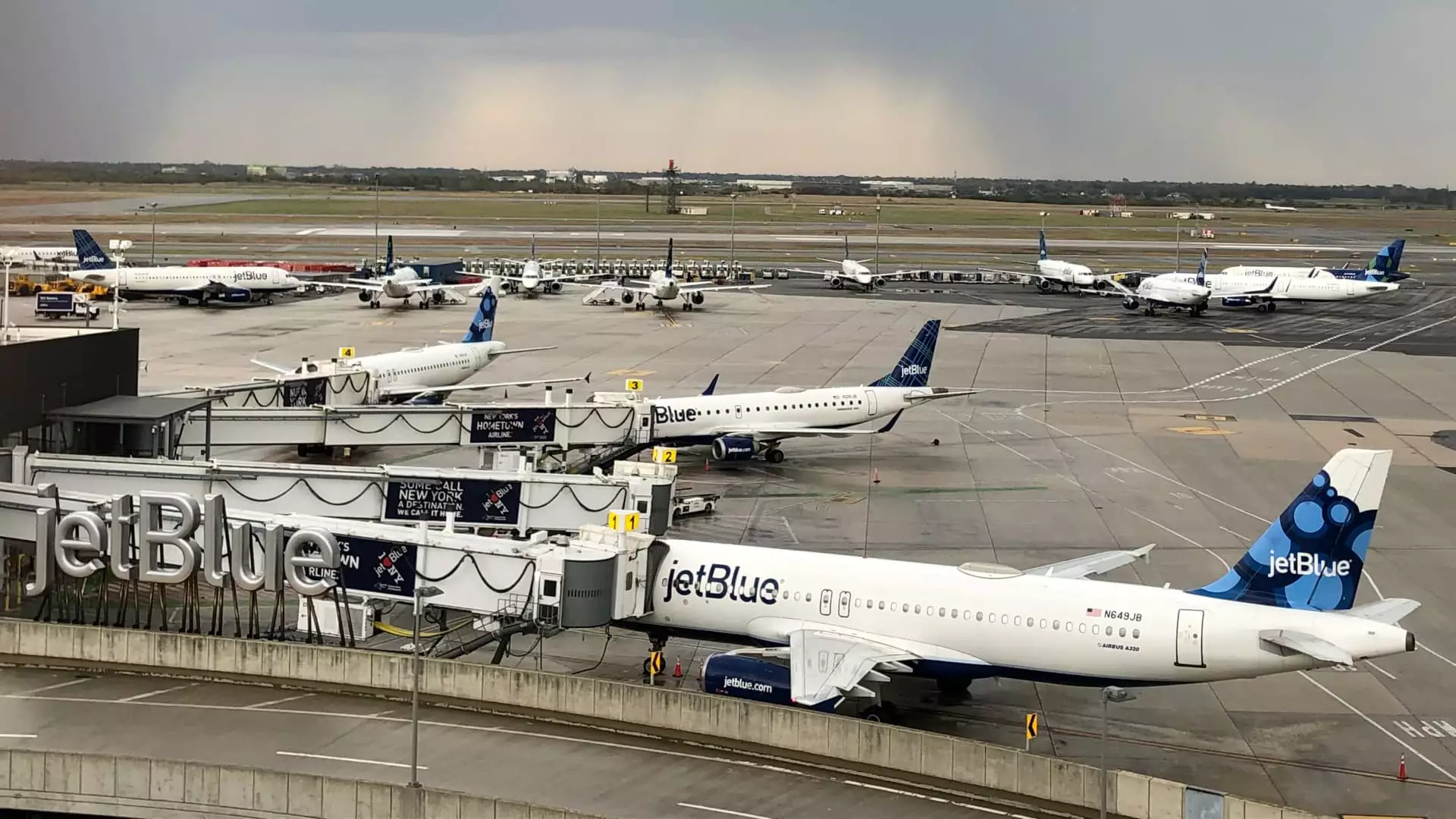JetBlue Airways is venturing into uncharted territory by establishing its inaugural airport lounges, marking a transformative moment in the airline’s more than twenty-year history. This strategic pivot aims to attract affluent travelers who are willing to spend more on their flying experiences while maintaining the airline’s competitive low-cost image. By introducing these lounges, JetBlue is not simply adding a service; it is redefining its brand and appealing to a broader market segment that prioritizes comfort and convenience.
Set to debut in late 2024, JetBlue’s first lounge will be located in the bustling Terminal 5 of New York’s John F. Kennedy International Airport. Following this, another lounge will emerge at Boston Logan International Airport. The JFK lounge will span 8,000 square feet, while the Boston venue will be even larger at 11,000 square feet. These lounges are designed to provide an oasis for travelers, featuring a variety of amenities such as cocktail and espresso bars, light snacks, and workspaces. This crowd-pleasing move not only caters to busy professionals but also promises a more relaxing atmosphere for those on the go.
Access to these lounges will be exclusively granted to passengers flying in JetBlue’s premium Mint business class on trans-Atlantic routes, as well as members of its loyalty program at the highest tier. Additionally, those who possess the airline’s forthcoming premium credit card in collaboration with Barclays will also enjoy entry. This move places JetBlue on par with other major airlines, capitalizing on a lucrative revenue stream that has proven successful for established players like Delta, United, and American Airlines.
The Competitive Landscape of Airline Lounges
Airline lounges have become essential in signaling a commitment to quality service and customer satisfaction. JetBlue’s announcement comes amidst a broader trend among airlines revamping their lounge offerings to capture high-value customers. Notably, Delta recently introduced its first exclusive Delta One lounge at JFK, an initiative aimed at alleviating congestion in its Sky Clubs. In this increasingly competitive terrain, JetBlue’s entrance into the lounge market signifies its dedication to enhancing the travel experience for premium travelers while competing with established brands.
Financial Considerations and Strategic Development
To fund these initiatives and ensure financial viability, JetBlue has been diligently working to scale back costs and focus on profitability. This includes delaying the delivery of new Airbus jets and pruning its route network. Such measures reflect the airline’s intention to deploy resources strategically and enhance operational efficiency, particularly for routes serviced by its Mint cabin, which include lie-flat seating and gourmet dining options.
However, JetBlue has taken a cautious approach to lounge access. Understanding the potential for overcrowding, the airline has chosen to limit access for travelers on other Mint routes, especially those on transcontinental flights. Jayne O’Brien, JetBlue’s head of marketing and customer support, emphasized the importance of managing guest numbers to maintain an enjoyable experience.
JetBlue, along with other airlines like Southwest and Spirit, is exploring ways to revamp passenger perks to accommodate evolving consumer expectations. With Southwest planning to introduce extra legroom seats and Spirit and Frontier promoting premium bundles that enhance overall travel experiences, JetBlue’s lounge initiative is reflective of a larger trend within the industry. By offering enhanced travel features, airlines are not only aiming to retain existing customers but also attract new ones willing to pay for elevated comfort and convenience.
JetBlue Airways’ decision to launch airport lounges is a significant strategic shift designed to enhance its market position and attract higher-paying customers. With luxurious amenities and a focus on customer experience, JetBlue is poised to compete with established airlines that have successfully leveraged premium offerings. As the airline navigates this new chapter, it reflects a broader evolution in air travel where comfort and experience are taking precedence, transforming the flying experience beyond the constraints of budget airlines.

